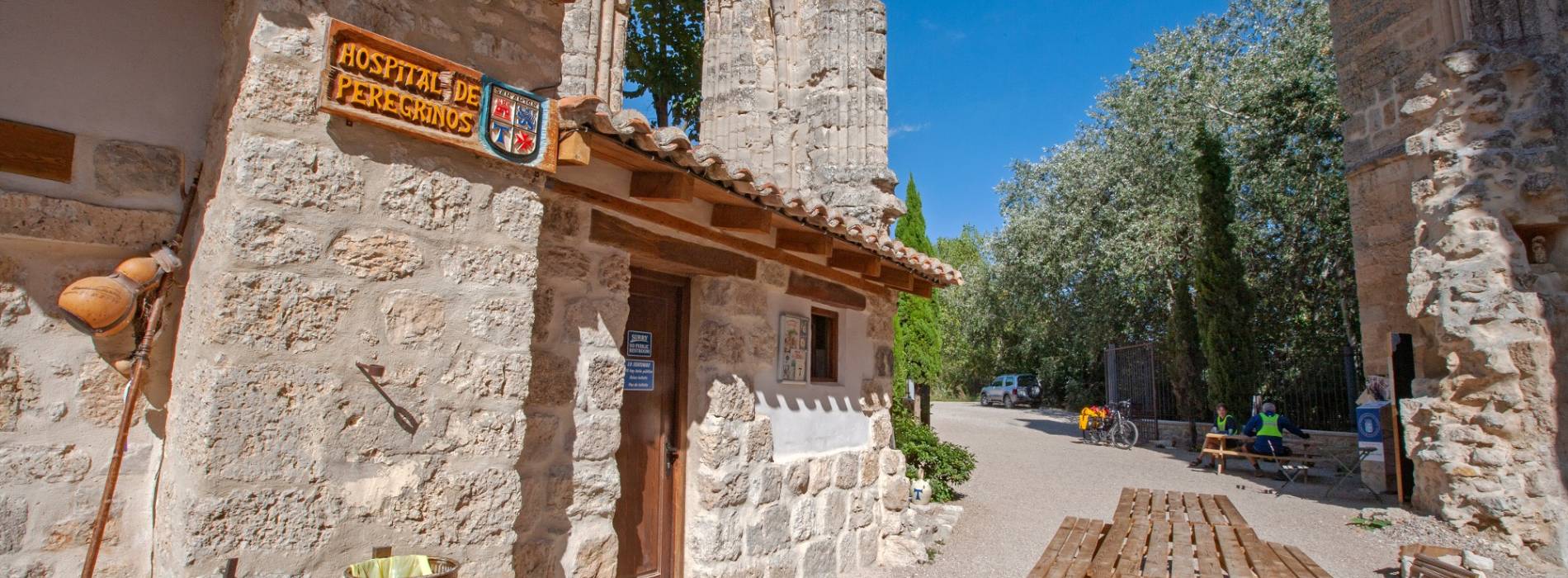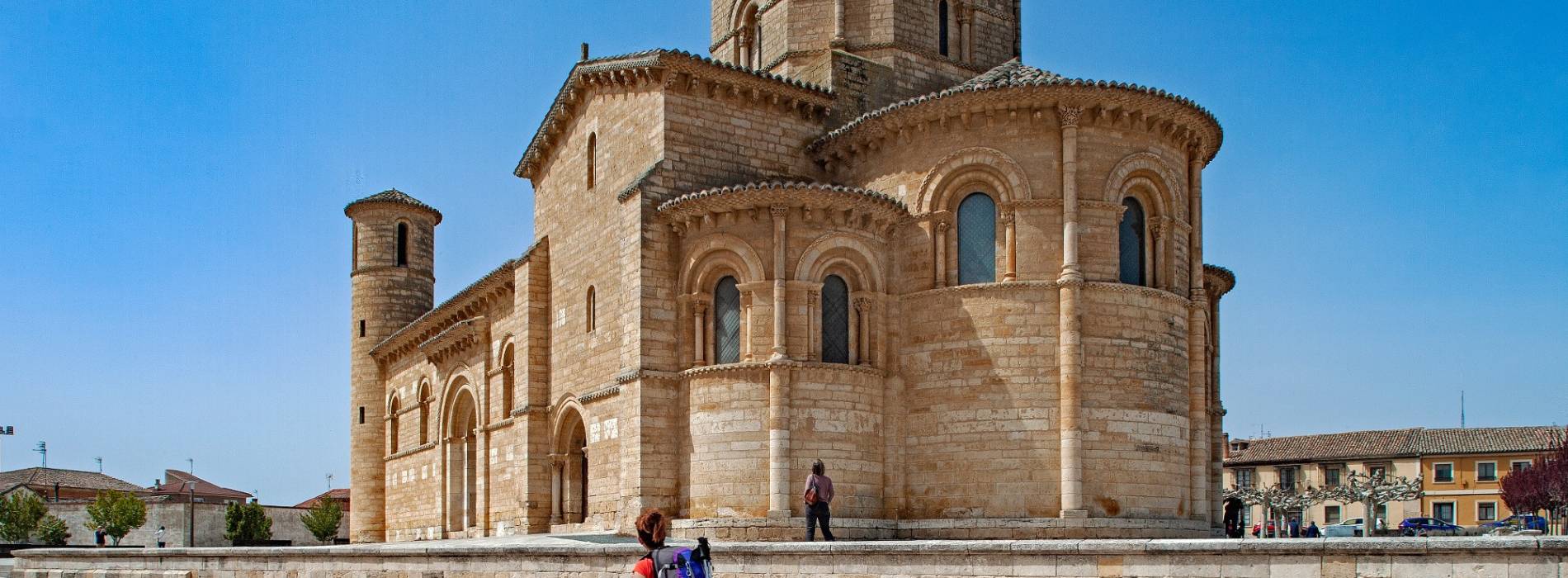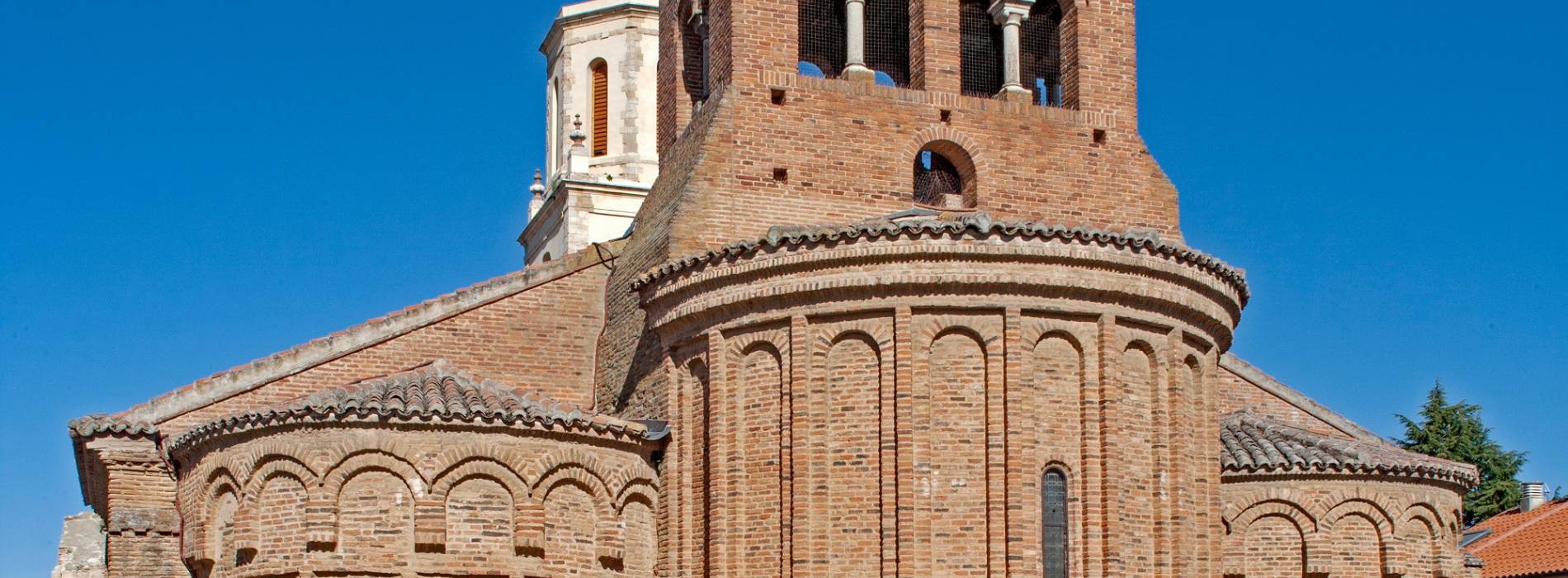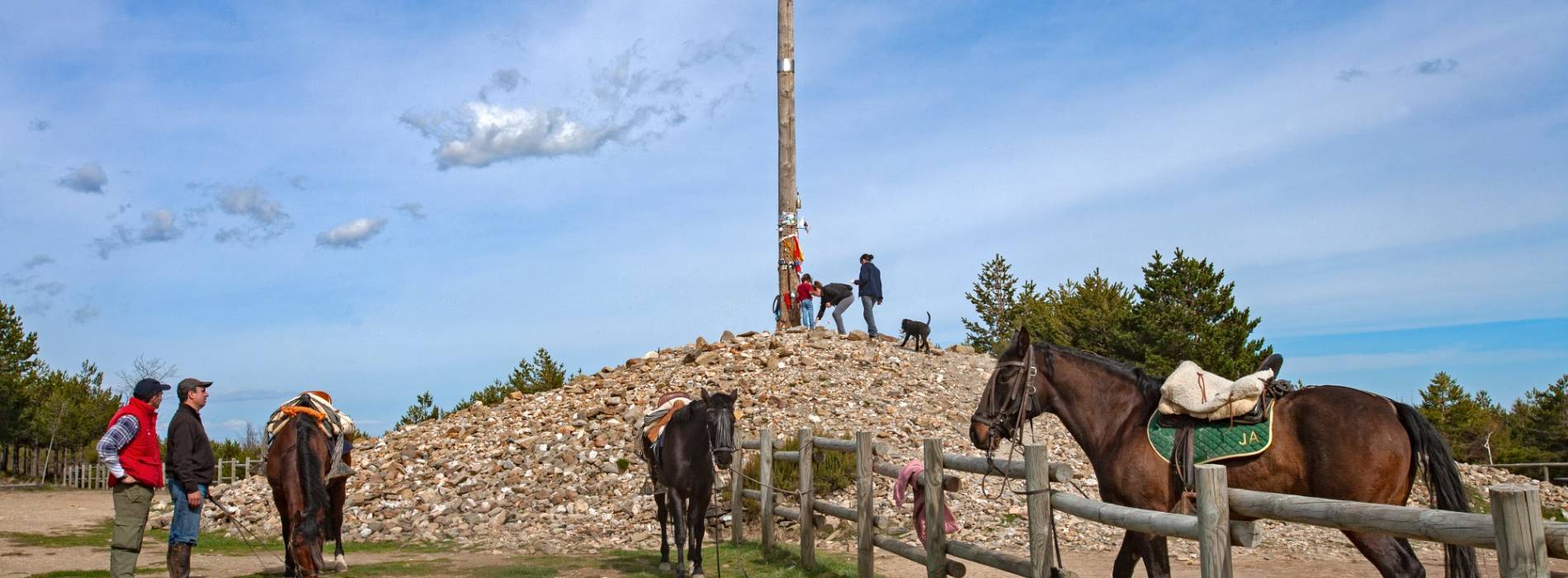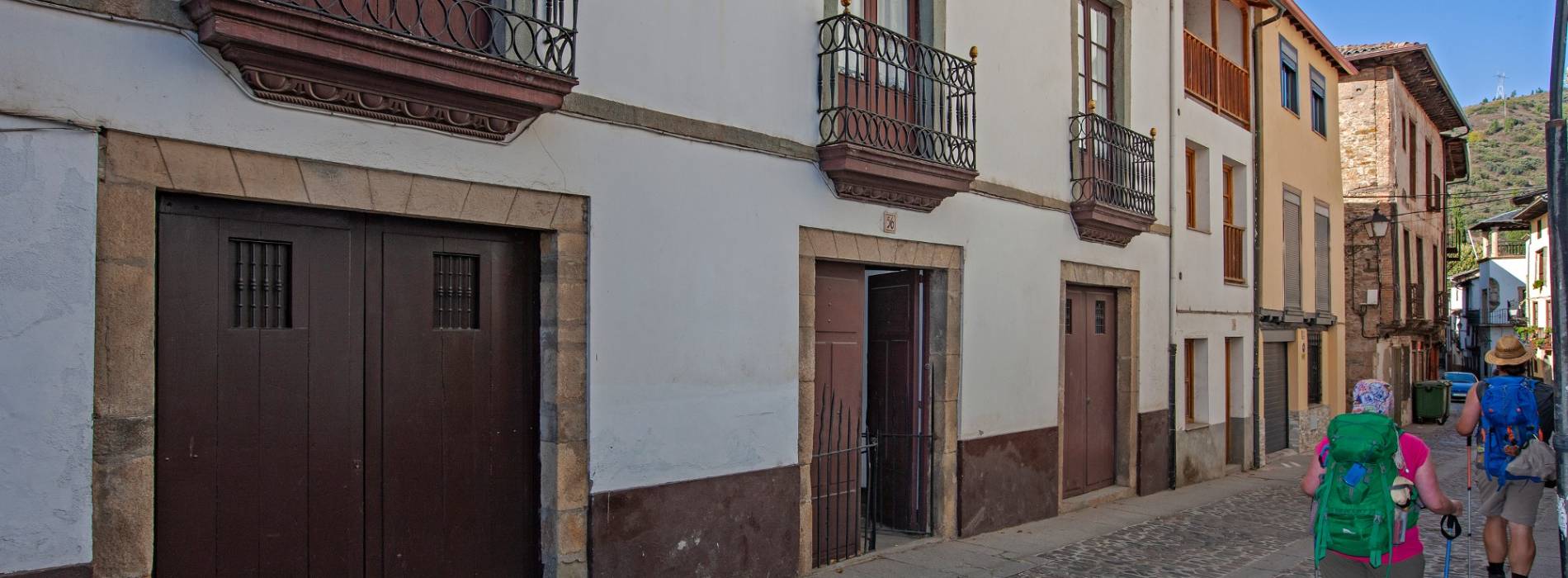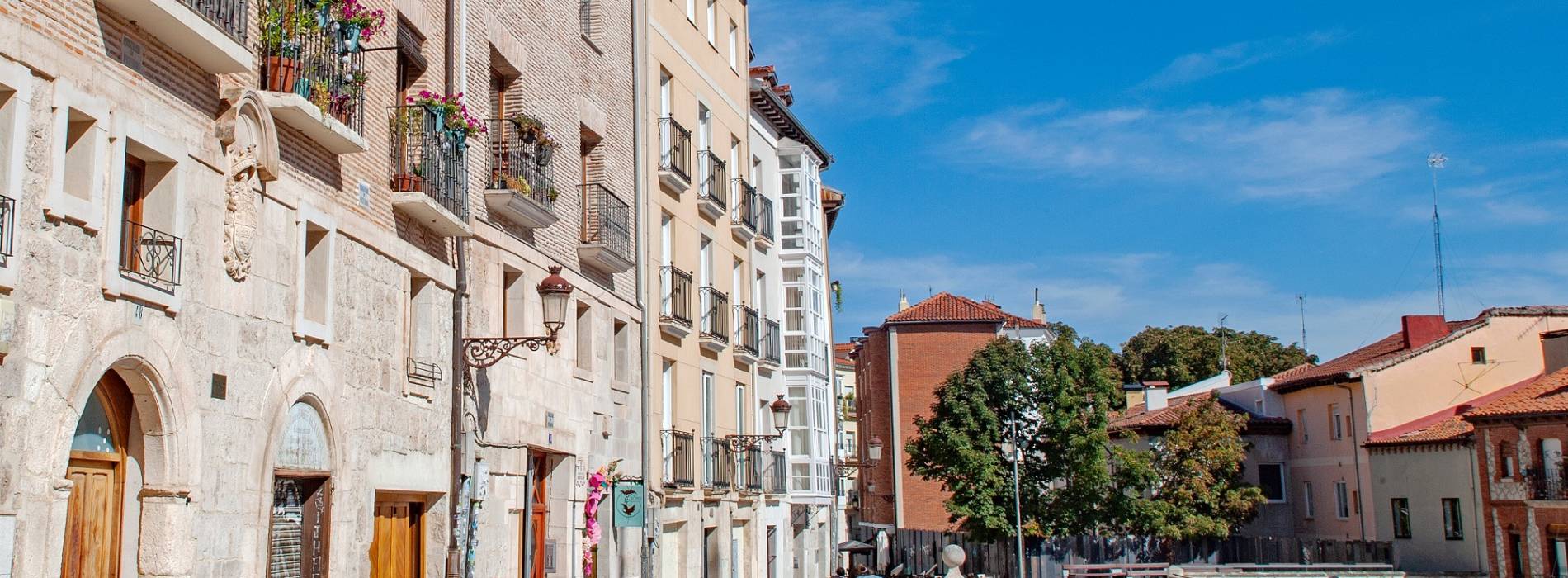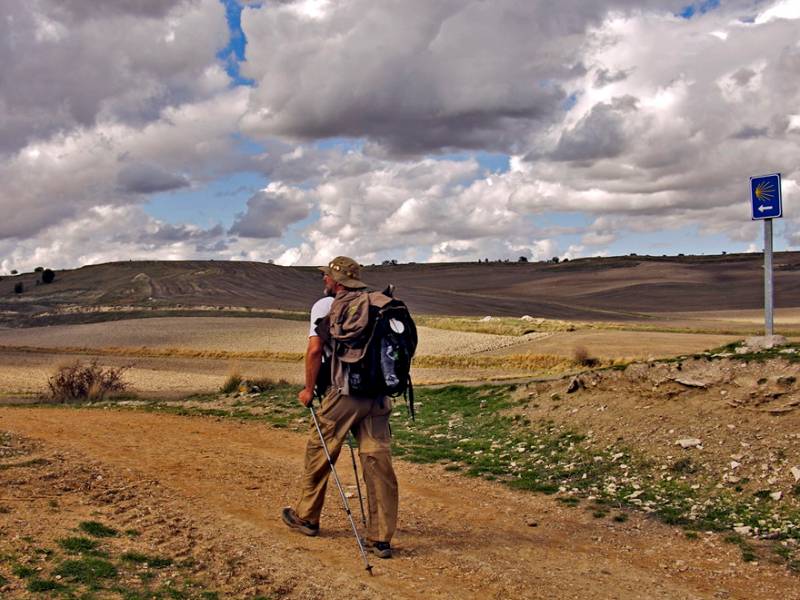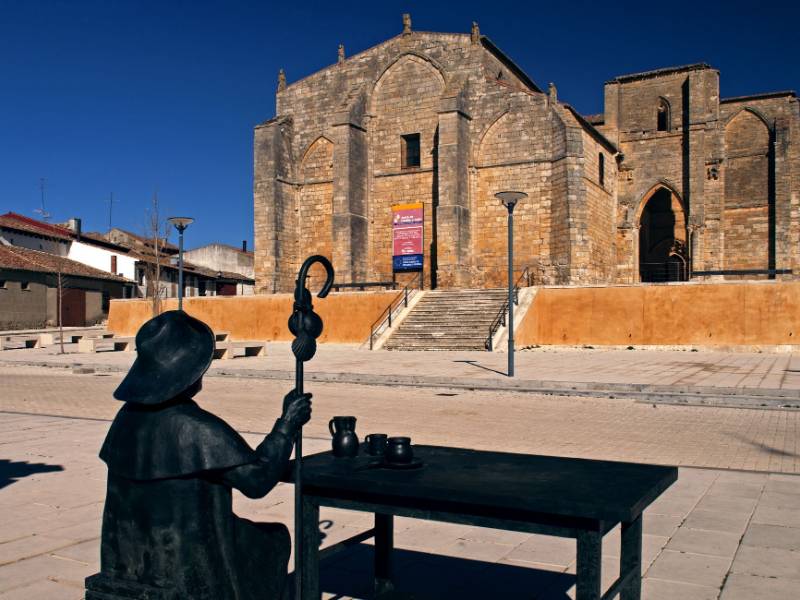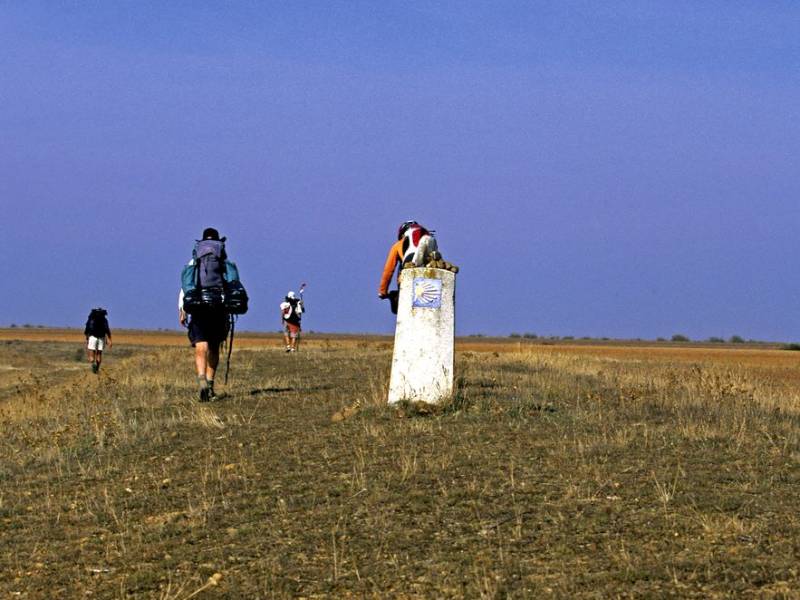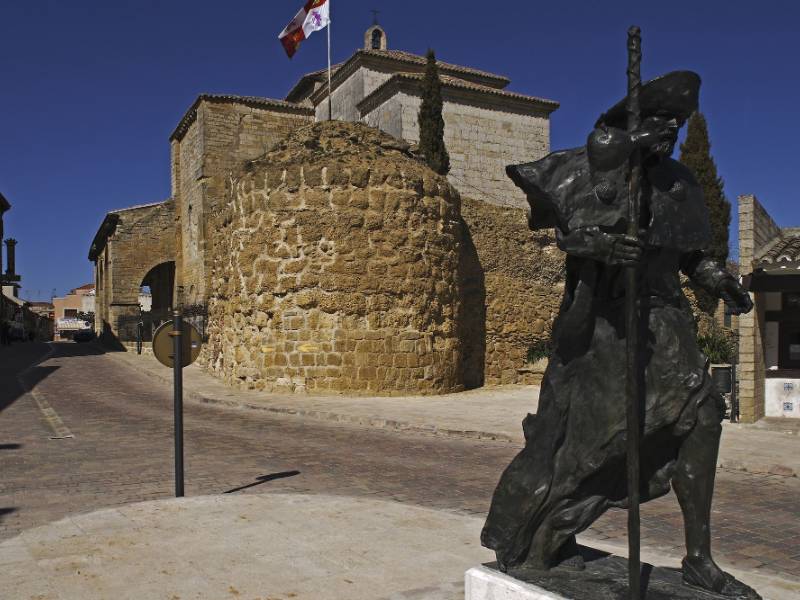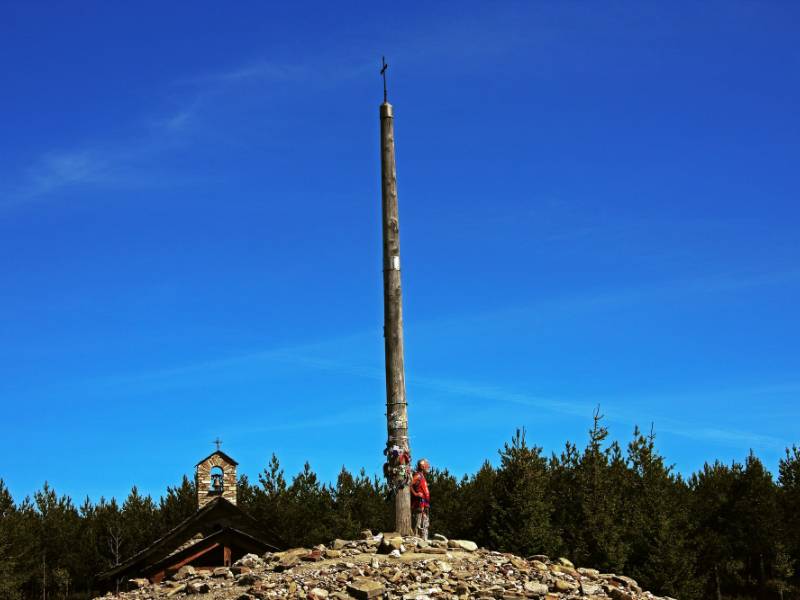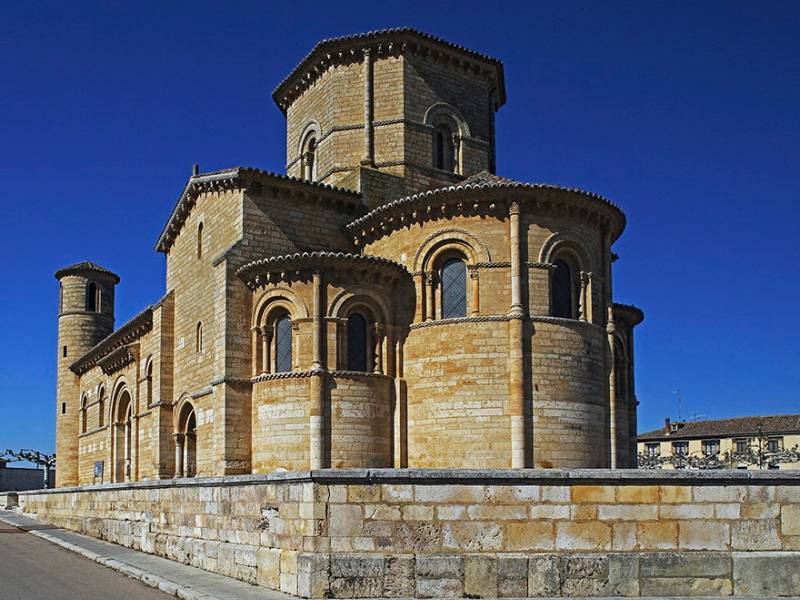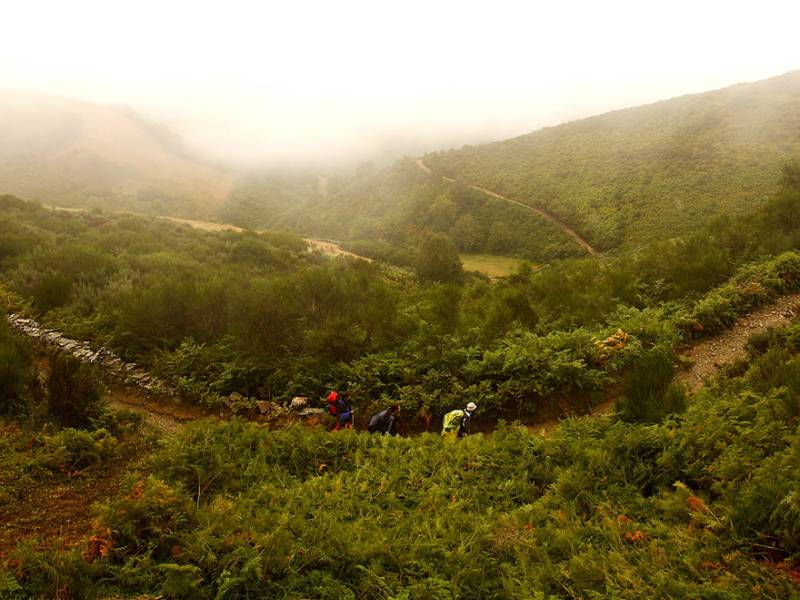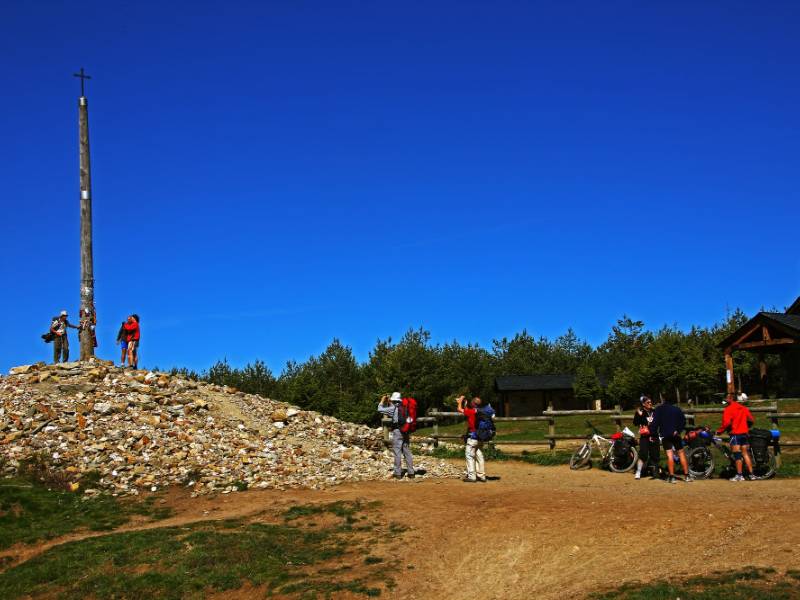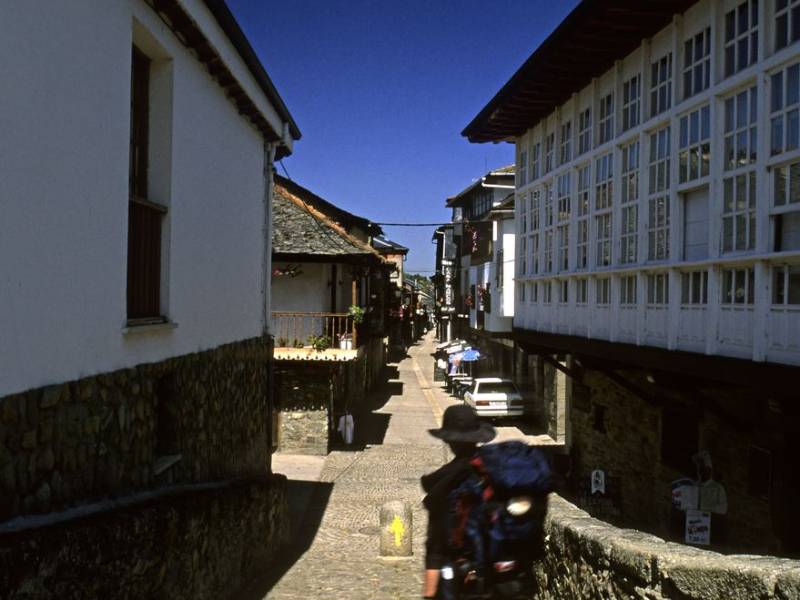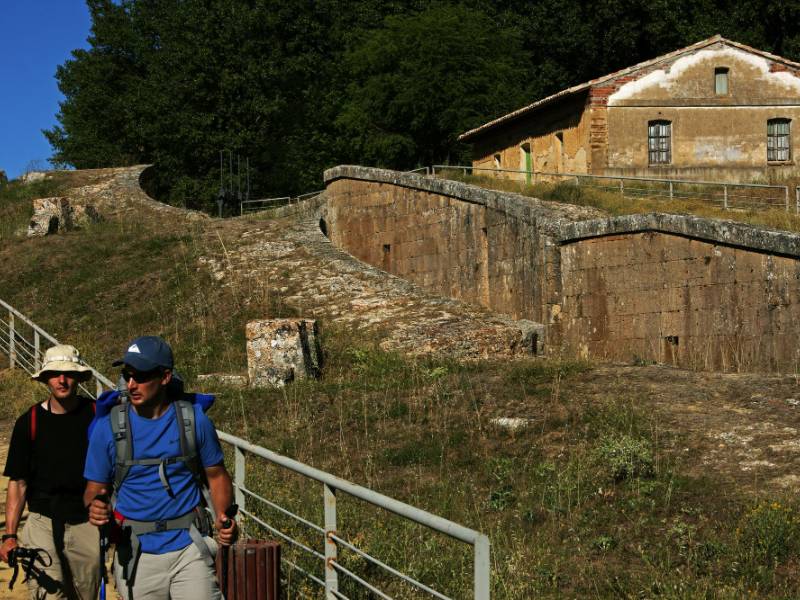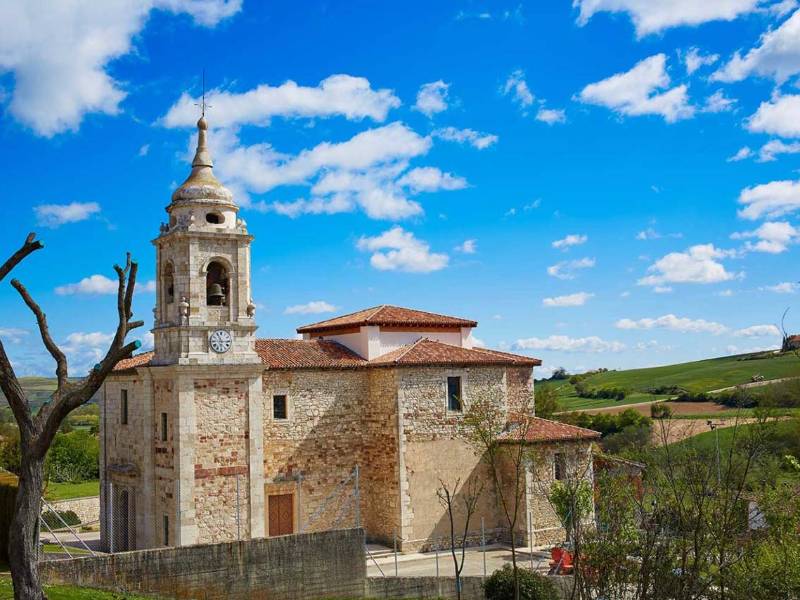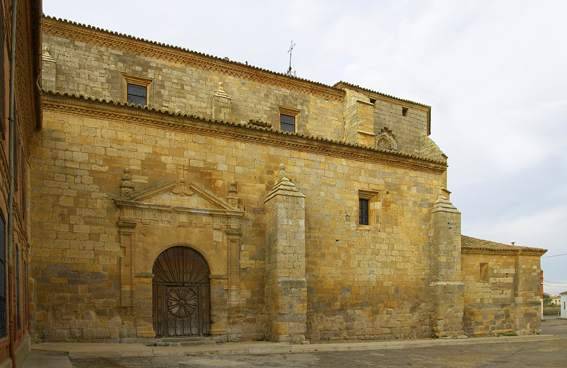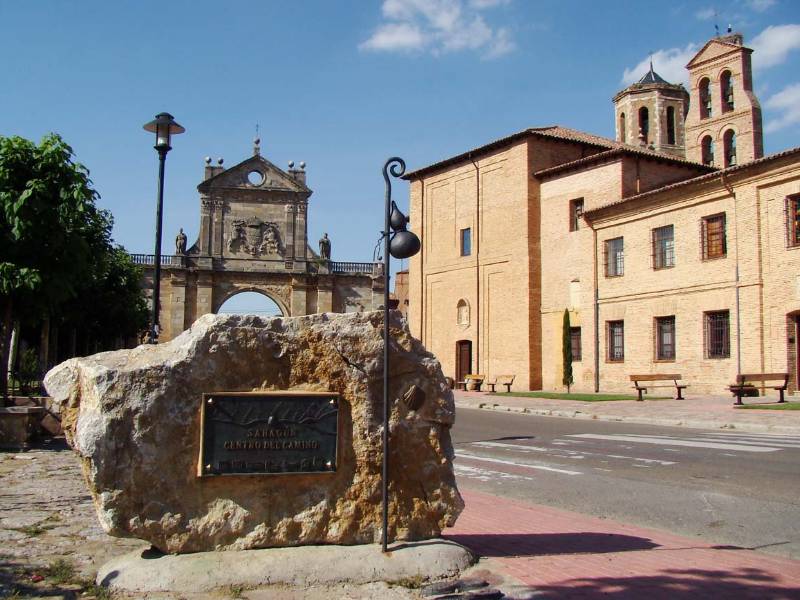The French Way of Saint James
- Position
- Burgos province
- Leon province
- Palencia province
- Type of route
- Large tour
From Redecilla del Camino to the village of La Laguna in the municipality of Vega de Valcerce, the legendary Camino de Santiago, along the nearly 400 kilometers that cross Castile and León, has been traveled by pilgrims from all over the world for some time. centuries whether on foot, by bicycle or on horseback.
Follow the famous yellow arrows that mark an exceptional route full of spirituality full of great heritage landmarks, from small Romanesque hermitages to large Gothic cathedrals, through natural landscapes, ancient paths and cozy towns where you can rest and regain strength.
Through the French Way, declared a World Heritage Site by UNESCO, you will enter the unique provinces of Burgos, Palencia and Leon , traveling through fifteen stages just as it was done in the Middle Ages, but with a modern and careful network of services. and assistance, with the goal of continuing until we find the remains of the apostle Saint James the Greater and lose our gaze contemplating the ancient end of the world in Finisterre. On your way you will be able to admire how the influence of this Christian route throughout history has shaped towns and cities, leaving an extraordinary artistic and monumental mark.
Prepare your visit
Data of interest
About the 'Credencial' (credential) and the 'Compostela'
The origins of the modern-day pilgrim’s credentials, which are only given to those completing all or par t of the Pilgrims’ Route to Santiago on foot, by bicycle or on horseback, lie in the letters of recommendation or safe conduct passes that were granted by kings, princes, members of the clergy, popes and other authorities during the early days of the Pilgrims’ Route to those travelling to Compostela.
The credentials are granted by the Church, the Friends of the Pilgrim’s Route to Santiago Associations, the Brotherhoods or other institutions duly authorised to this effect by Santiago Cathedral. They are issued prior to the star t of the Route or at the starting point by the organizations listed above. It is advisable to take a letter or document that identifies the applicant.
Advice for the pilgrim: before, during and after the road
Before you take the way. Prepare and inform yourself:
Do not forget, in addition to the ID or passport, health card or similar. See your Health Center will advise you, especially if you follow some type of treatment or have any health problems.
Kit: It is useful to carry antiseptic, healing material (plaster, plasters, bandages), analgesics, antiinflammatory, hypodermic needle and thread to the healing of sores, mosquito repellent, antihistamines (for allergies), antifungals, and protection cream solar.
Prepare your wardrobe, adapted to the time when the pilgrimage takes place. The footwear is essential. It is advisable high boots to prevent ankle sprains, it is also waterproof and breathable to prevent problems arising from excessive sweating (blisters, fungal infection). Bring flip-flops to wear in the shower.
Consumer Decalogue of the Pilgrim
Ten tips for a good Way:
- Plan in advance the stages and make a budget with expenses to be faced along the Camino.
- All products and services must contain information, clear and visible, about the price and payment methods.
- Buy labeled products; it is a guarantee of safety. Demand and save the ticket or receipt.
- Check the expiration date or best before food. Choose establishments to ensure their proper handling.
- Check before leaving the establishment that the items purchased are in perfect conditions. Remember that all goods are guaranteed for two years.
- If you use information services on the Camino de Santiago through the Internet, or mobile via SMS or MMS, make sure about the cost.
- Remember that calls from one country to another country have a special rate or roaming. Find out the price beforehand whether to make such calls.
- Keep on hand the IMEI of your mobile phone. In case of loss, you must provide it to your phone operator.
- Choose ATM is located inside the premises of the bank. They are safer. Do not throw the receipt of the transaction without having previously broken.
- Order the complaint formulary if you have a problem.
Recycling at the Way of Saint James

The Pilgrims’ Route to Santiago boasts international acclaim and offers visitors a unique experience.
It has its own special significance for each pilgrim, one which is not necessarily spiritual, and is followed by people from all over the world eager to experience for themselves everything this route has to offer.
Of the many pilgrims’ routes leading to Santiago de Compostela, the French Way is by far the most popular and busiest. It starts in the French town ofSaint Jean de Pied de Port and extends for 781 km as far as the Cathedral in Santiago de Compostela.
What is the Collaboration Route?
This is a joint initiative set up by Ecoembes and the Junta de Castilla y León, bringing together the efforts of both organisations to guarantee the environmental conservation and care of the stretch of the French Way that crosses the autonomous community of Castilla y León.
Tips and health information for pilgrims
Among noted the following prevention tips:
- Make the Way at your own pace, not the other.
- Avoid the exhibititon to the sun. Wear appropriate clothing, sunglasses, hat and sunscreen.
- Drink water frequently. Make sure your drinking.
- Do not eat foods that are not properly conserved
- Wash your hands frequently and always before meals.
- Avoid walking in low light and always observe traffic regulations.
- If you make the way by bike, wear a helmet and a high visibility vest.
- Bring insect repellent.
- Do not bathe in rivers unfit for swimming.
- Do not walk out of the paths.
Travel Gear
While doing the Camino de Santiago you should carry certain essential items, whether on foot as if it is by bicycle.
The backpack should not lack the appropriate clothing - light, comfortable, durable and good breathability-. The shoe is undoubtedly the best friend for the traveler, so it should be light and be appropiate. Best if it has been used to prevent chafing and blisters that often produces the newly released.
A cap, beret, hat or visor will need protection from the sun and avoid sunburn, especially during the summer months and when walking in the middle of the day.
We recommend carrying waterproof raincoat or another priority items that should not miss at home. The same goes with the kit, which should contain the key to healing the wounds (gauze and bandages, hydrogen peroxide, bandages, ointment for cramps....).
Useful tips to make the Way of Saint James by bicycle
Before setting off, draw up a plan based on the total number of kilometers you plan to cover and your daily average.
As for your physical preparation, if you do not cycle regularly, tackling long hours on your bike each day requires some serious training. In this sense you should consider visiting a specialist for a check up, as you will be making a major physical effort over a prolonged period. Draw up a training schedule, star ting off with just a few kilometers a day and gradually building up the distance. Complete your physical training with visits to the gym to improve the flexibility of your legs, back and neck.
As for your bicycle, it is essential to get it checked by an expert. Your cycling technique is also vital. You should train with experienced cyclists, who will advise you on questions such as the best cycling posture, how and when to change gear, pedaling rhythms…
Useful tips to walk the pilgrim's route to Santiago de Compostela
For many, making the pilgrimage to Santiago de Compostela on foot is one of the most fulfilling and gratifying experiences of their lives. It is both a physical and mental challenge that requires thorough preparation. A good way of starting is to read up on the history of the Route and the pilgrimage. This will help pilgrims identify with those that have gone before them, as well as enabling them to get more out of the experience.
There is a vast number of books on the Pilgrims’ Route to Santiago, make your choice from this wide selection, read and try to plan your various stages beforehand; bearing in mind that ideally you should cover an average distance of between 25 and 30 kilometres a day. You could also include the odd rest day, or alternate longer stages with shorter ones, making them coincide with places you would particularly like to spend longer visiting. This will provide you with rest periods, but will not break your rhythm.

